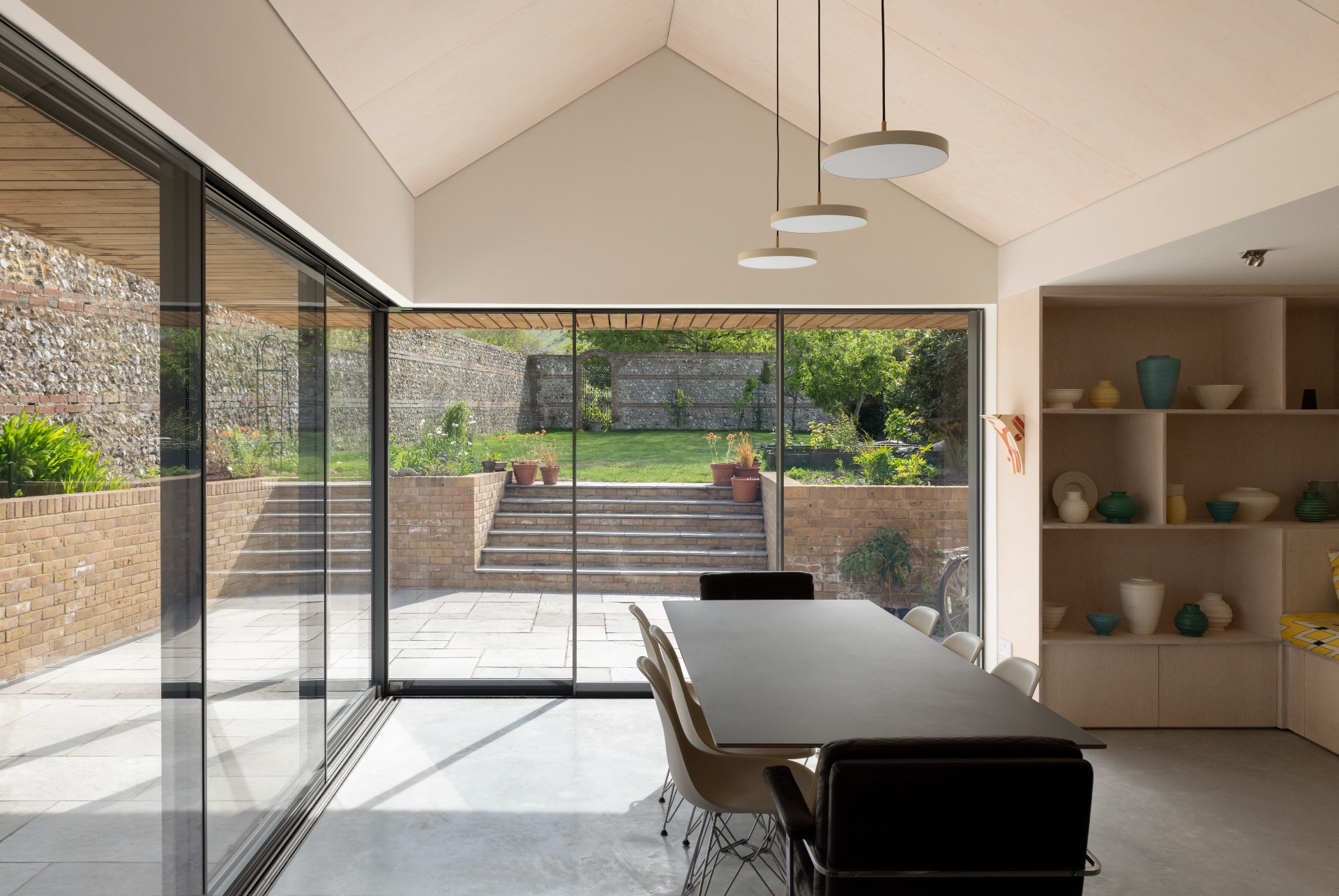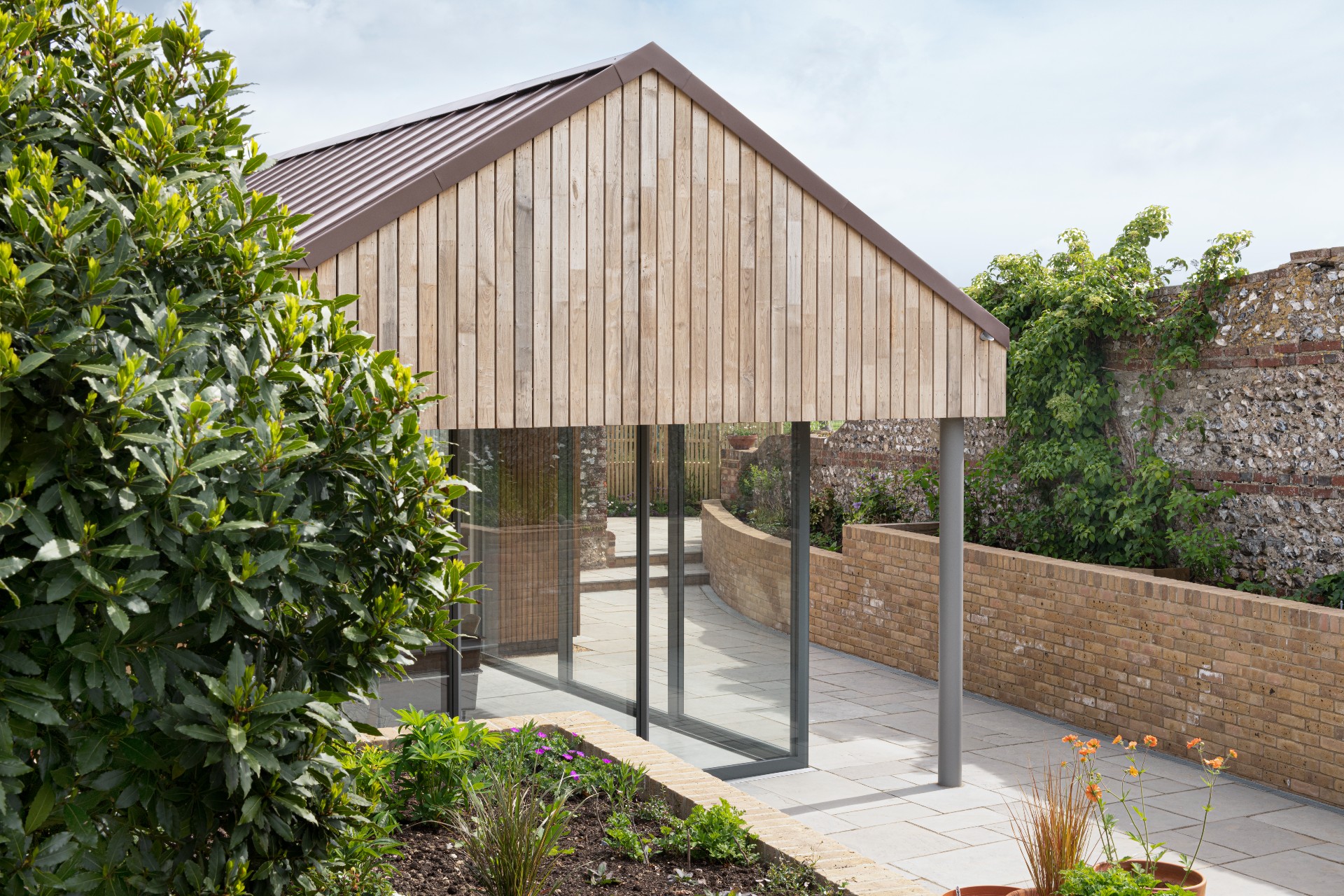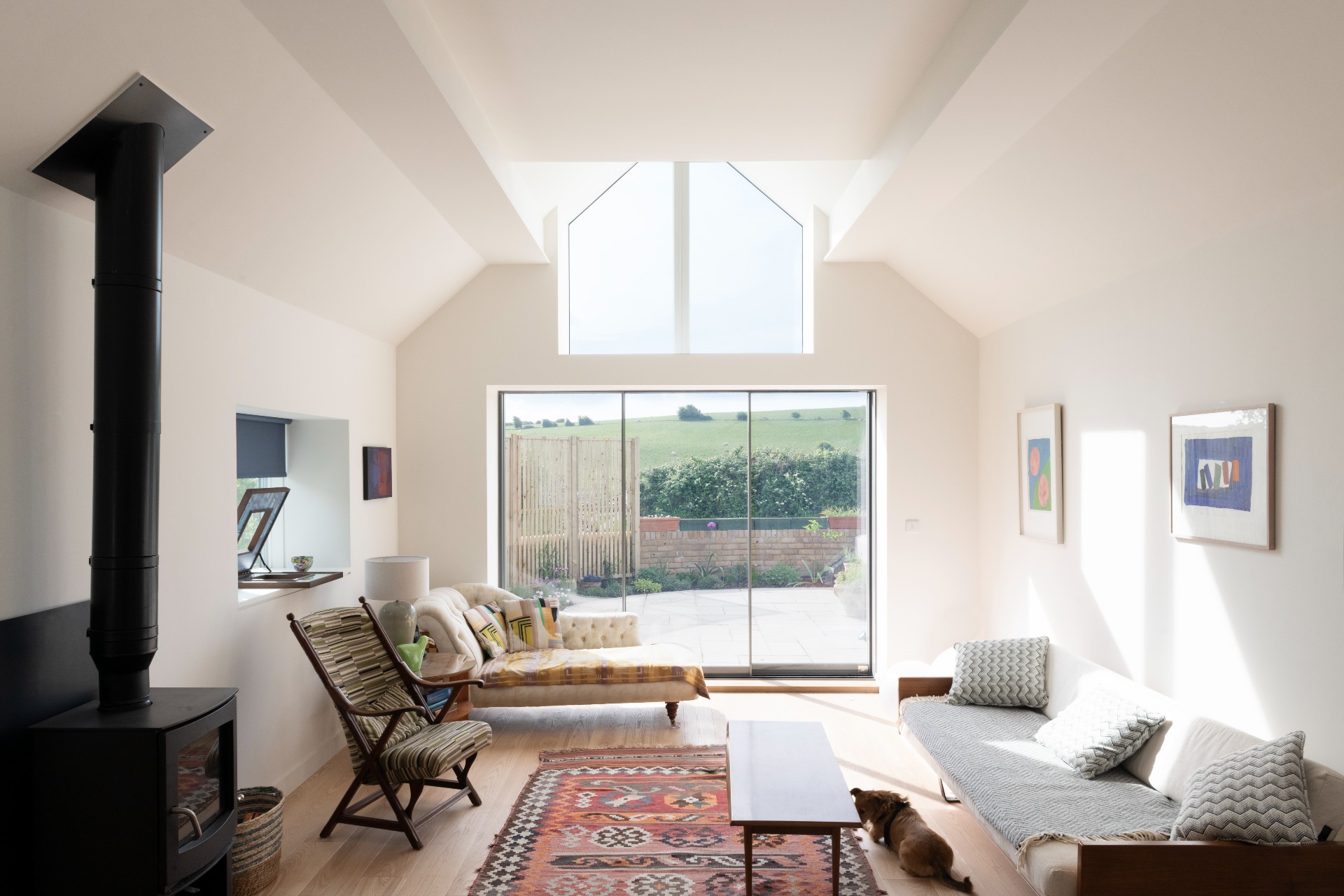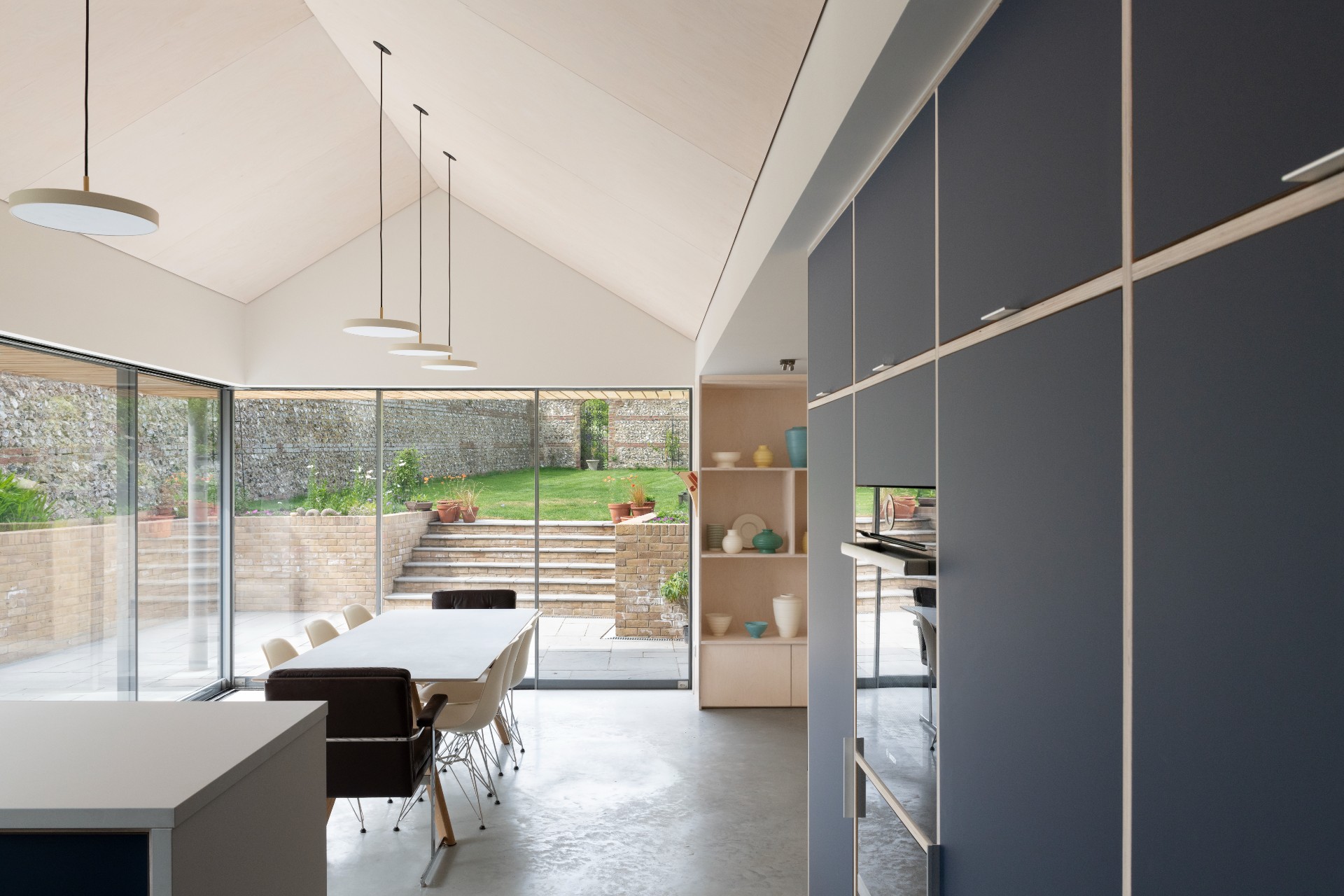A sustainable extension transforms BakerBrown’s converted forge
BakerBrown Architects crafts a sustainable extension for a converted forge project in southern England

Ivan Jones - Photography
BakerBrown Architects has an award-winning reputation for sustainable architecture, pioneering ways of reducing a building’s footprint through meticulous design, careful use of resources, and thoroughly practical and attainable methods like insulation and the use of local materials and trades. In a similar vein, its latest work is a sustainable extension that makes the most of a unique site that brings together past, present and future.

The practice’s most recent project is a conversion of a long, low, gabled dwelling house in the south of England.
The original structure was once the village forge, making all manner of metal goods for local farmers and businesses. It was subsequently converted into a house and the surrounding neighbourhood upgraded to a Conservation Area.

The clients approached BakerBrown with the intention of creating a better relationship between the house and its garden, set at 90 degrees to the original structure.
The architects also had to upgrade the original masonry building. Built in the era between insulation and proper damp-proofing, it was becoming uneconomical to run.

The primary change is the creation of an extension that reaches out into the walled garden, transforming what was a modest sunroom into a large open-plan kitchen and dining room. A new red zinc pitched roof oversails the extension, providing solar shading for the glazing.
The main building has been overclad to radically improve its ability to retain heat in the winter and cool air in the summer.
Receive our daily digest of inspiration, escapism and design stories from around the world direct to your inbox.

Outside, a new rainscreen has been made from locally sourced sweet chestnut, adding to the increased thermal performance of the building.
The original boiler was replaced with a heat pump; despite increasing the floor area by around 40 per cent, the combination of more efficient heat generation and better insulation has reduced the property’s energy consumption.

All the design details are carefully considered with energy-saving in mind. The polished concrete floor slab in the extension acts as a heat sink, drawing in warmth from the glazing in winter. Sustainable birch plywood is used for the kitchen, ceilings, and joinery, lightly oiled to reflect light, while traditional vernacular elements like the original flint wall are retained and exposed.
Set up by Duncan Baker-Brown in 1994, the studio is based in East Sussex, and frequently works with vernacular forms, existing buildings, and conversions. Past projects include The Waste House – made, as the name suggests, from waste materials; and The House That Kevin Built, prefabricated using 90 per cent bio-based materials and the UK’s first EPC A* rated home. In 2017, BakerBrown authored The Re-Use Atlas: A designer’s guide to the circular economy, a pioneering book looking at how architects can make better use of limited resources.
INFORMATION
Jonathan Bell has written for Wallpaper* magazine since 1999, covering everything from architecture and transport design to books, tech and graphic design. He is now the magazine’s Transport and Technology Editor. Jonathan has written and edited 15 books, including Concept Car Design, 21st Century House, and The New Modern House. He is also the host of Wallpaper’s first podcast.
-
 A tale of two Audis: the A5 saloon goes up against the A6 Avant e-tron
A tale of two Audis: the A5 saloon goes up against the A6 Avant e-tronIs the sun setting on Audi’s ICE era, or does the company’s e-tron technology still need to improve?
-
 Inside Christian de Portzamparc’s showstopping House of Dior Beijing: ‘sculptural, structural, alive’
Inside Christian de Portzamparc’s showstopping House of Dior Beijing: ‘sculptural, structural, alive’Daven Wu travels to Beijing to discover Dior’s dramatic new store, a vast temple to fashion that translates haute couture into architectural form
-
 A music player for the mindful, Sleevenote shuns streaming in favour of focused listening
A music player for the mindful, Sleevenote shuns streaming in favour of focused listeningDevised by musician Tom Vek, Sleevenote is a new music player that places artist intent and the lost art of record collecting at the forefront of the experience
-
 Arbour House is a north London home that lies low but punches high
Arbour House is a north London home that lies low but punches highArbour House by Andrei Saltykov is a low-lying Crouch End home with a striking roof structure that sets it apart
-
 A former agricultural building is transformed into a minimal rural home by Bindloss Dawes
A former agricultural building is transformed into a minimal rural home by Bindloss DawesZero-carbon design meets adaptive re-use in the Tractor Shed, a stripped-back house in a country village by Somerset architects Bindloss Dawes
-
 RIBA House of the Year 2025 is a ‘rare mixture of sensitivity and boldness’
RIBA House of the Year 2025 is a ‘rare mixture of sensitivity and boldness’Topping the list of seven shortlisted homes, Izat Arundell’s Hebridean self-build – named Caochan na Creige – is announced as the RIBA House of the Year 2025
-
 In addition to brutalist buildings, Alison Smithson designed some of the most creative Christmas cards we've seen
In addition to brutalist buildings, Alison Smithson designed some of the most creative Christmas cards we've seenThe architect’s collection of season’s greetings is on show at the Roca London Gallery, just in time for the holidays
-
 In South Wales, a remote coastal farmhouse flaunts its modern revamp, primed for hosting
In South Wales, a remote coastal farmhouse flaunts its modern revamp, primed for hostingA farmhouse perched on the Gower Peninsula, Delfyd Farm reveals its ground-floor refresh by architecture studio Rural Office, which created a cosy home with breathtaking views
-
 A revived public space in Aberdeen is named Scotland’s building of the year
A revived public space in Aberdeen is named Scotland’s building of the yearAberdeen's Union Terrace Gardens by Stallan-Brand Architecture + Design and LDA Design wins the 2025 Andrew Doolan Best Building in Scotland Award
-
 A refreshed 1950s apartment in East London allows for moments of discovery
A refreshed 1950s apartment in East London allows for moments of discoveryWith this 1950s apartment redesign, London-based architects Studio Naama wanted to create a residence which reflects the fun and individual nature of the clients
-
 In this Cotswolds home, drama meets minimalism
In this Cotswolds home, drama meets minimalismCotswolds home Hiaven house, with interiors designed by McLaren Excell, is a perfect blend of contemporary chic and calm, countryside drama